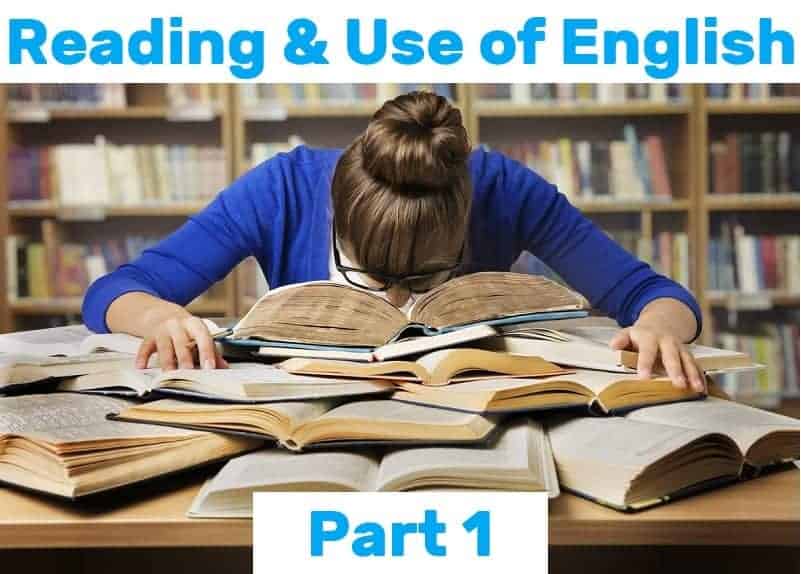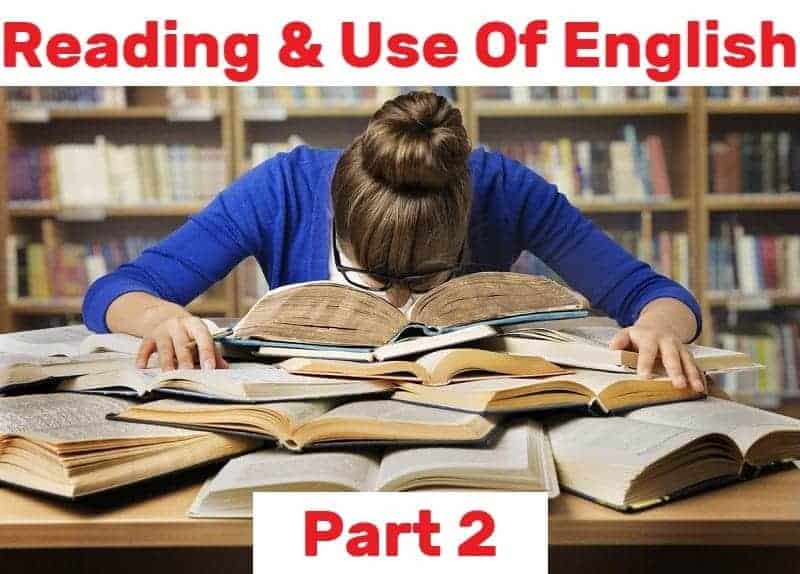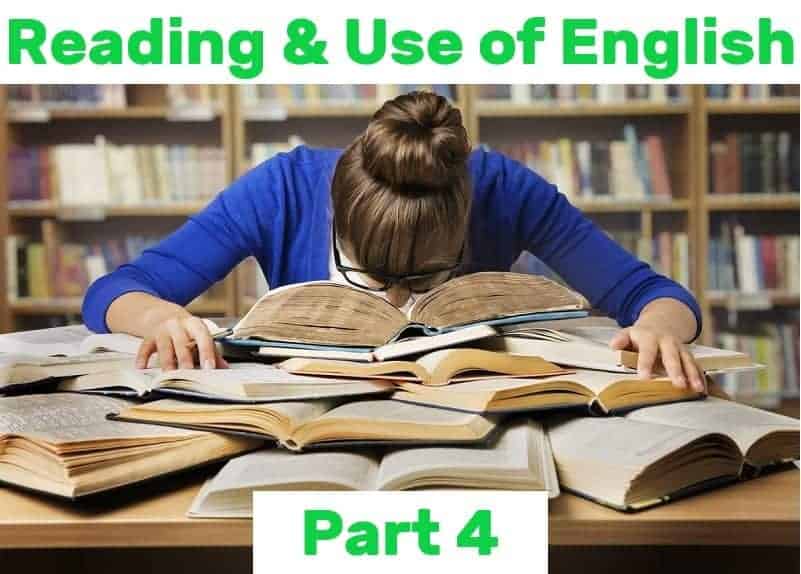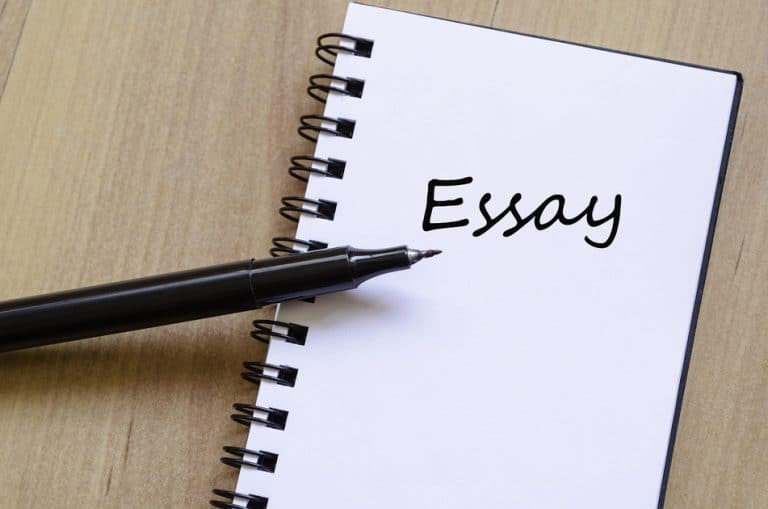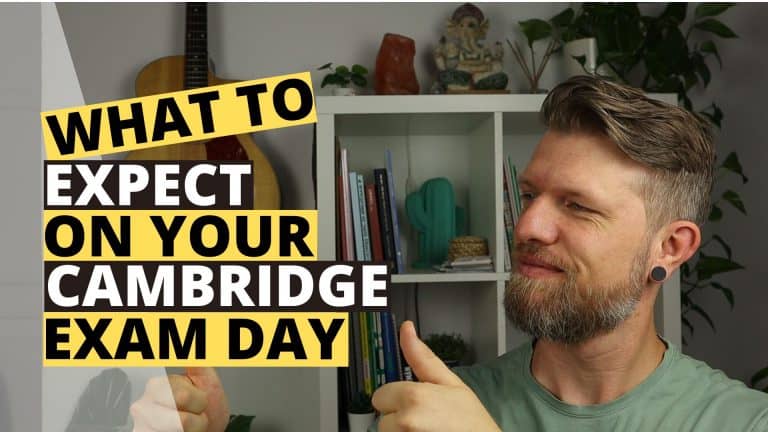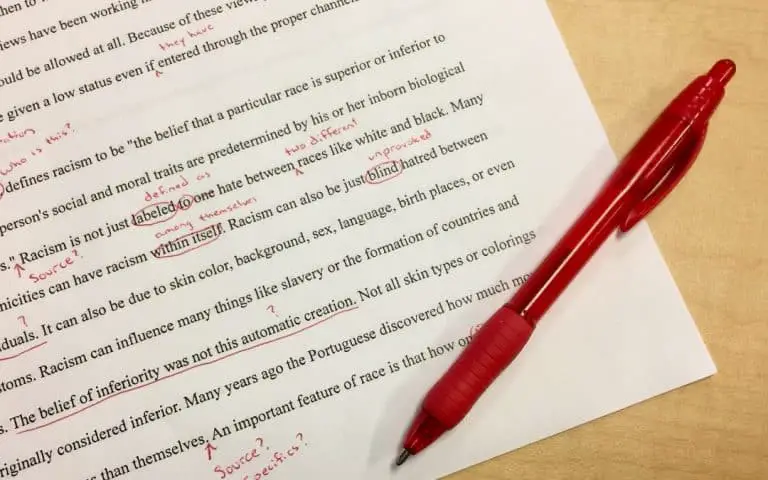Reading & Use of English Part 1
Congratulations! You have decided to come to the right place. Here, you can find information about the FCE exam and all the different papers and parts. In this article we are going to have a look at Reading & Use of English Part 1. Of course, you can also find out about Cambridge B2 First as well as Reading & Use of English in general.
I have also written six articles about the other parts of this exam paper to give you all the information you need with the best tips and tricks I found in all the years of teaching FCE preparation classes.. If you would like to have a closer look at my posts, just follow the links below.
What do you have to do in part 1?
Multiple choice cloze (A cloze is a text with gaps.). You have to fill in eight gaps by choosing from options A, B, C or D.
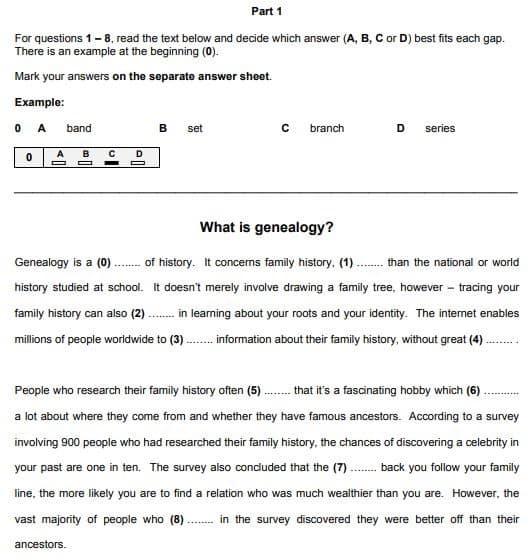
At the very top there is always an example for you. The example is the gap in the text with number 0. A lot of students get confused because they try to put the first answer in gap 0. Ignore that and start with number 1. I have seen many people getting zero marks because they made this tiny but terrible mistake.
The answers look something like the ones below. You can see that the four options for each gap go from left to right in eight rows and you simply choose the one that fits the gap.
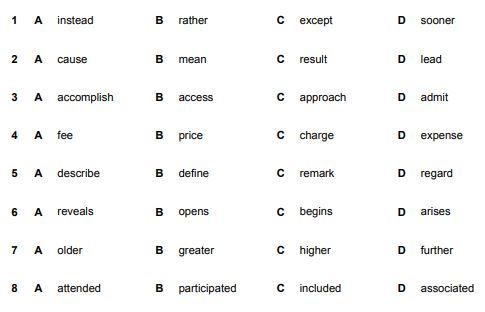
Reading & Use of English Part 1 tests your vocabulary, especially collocations (fixed word combinations), and phrasal verbs, but also your understanding of the whole sentence. It belongs to the reading portion of the exam together with parts 5, 6 and 7 so it is not a Use of English task. It is important that you understand the structure of the whole exam paper before you start looking at each individual part.
The 3 most difficult things about this part?
There are a couple of difficulties that candidates have and mistakes they make in this part of the exam. First, I’m going to point out the problems and in the next paragraph (Tips & strategies) I will give you advice on how to deal with them.
1. Candidates don’t know how to do the task
This is the reason why you are reading my article. Too many candidates just look at the gap and the possible answer and decide based on what feels right. Remember that the FCE exam is designed to test your English level and not your guessing skills. Prepare the right way and make a plan.
2. Candidates don’t know enough vocabulary
As I mentioned before, Reading & Use of English Part 1 tests your vocabulary, especially collocations, phrasal verbs and some understanding at the sentence level. You have to study these structures and expressions beforehand or you will be in trouble. Don’t hope for good luck, but put the work in and get ready.
3. Candidates have problems with time management
There is no doubt that Reading & Use of English is an exam paper with a lot of time pressure. You only get 75 minutes to complete seven tasks. Without the right strategy you might not even be able to look at all the different parts.
Tips & strategies
After looking at the different problems that many students have to deal with we can now try to find solutions for these issues. The most important piece to be successful is preparation. If you know what you have to do and the most efficient way to do it, you will win. If you think that you can just be lazy, walk into the exam and do it, you are wrong.
Read as much as possible in your preparation. You will see tons of grammar and useful vocabulary which can be helpful in the exam. In the beginning I recommend reading for around 5-10 minutes per day. Underline 5-10 new words or phrases and look them up afterwards. Through this active reading approach you can achieve great success.
Over the years, I have found that the following plan works for the majority of people in the FCE exam. I speak from my experience, but it is not a guarantee and you might find a better way for you. However, let’s see what we’ve got here:
- Read the title and text quickly (optional)
- Look at the words before AND after each gap and look for signal words
- Look at the possible answers and choose the one option that fits the gap
- Read the text again
I’m now going to explain each of these steps in more detail and show you a few examples so you get a better idea of the process.
1. Read the title and text quickly (optional)
The first step depends on you. If you feel that your understanding of texts in general as well as your knowledge of vocabulary and grammatical structures is good enough, feel free to jump to the next point. I have found, however, that most students benefit from reading the text first and then going to analyse the gaps. The reason for this is that a quick (and I mean QUICK) skimming of the text gives you a first idea of the topic, which can help once you try to find the best option for each gap.
You can’t expect a lot of familiar topics in the exam. Cambridge do this on purpose because they want to test your English and not your knowledge of the topic. If you knew a lot about it, you would have a little advantage, so you usually find strange topics like the one in our example task. Any idea what genealogy is? No? There you go.

So, read the text once as fast as you can for a general idea and then move on to the next step.
2. Look at the words before AND after each gap and look for signal words
I put two tasks in one step for you because they go hand in hand. Firstly, you read the words before and after the gap. It is important to do both as you might find your signal word anywhere in the sentence. This also means, that you sometimes have to read the whole sentence to understand what’s happening around the gap.
A signal word can be any word that helps you decide which option to choose as the correct answer. In Reading & Use of English Part 1 you should focus on prepositions, verbs, adverbs, nouns that we could use to make a collocation, etc. Here is an example for you:

Looking at gap number 1, the signal word is ‘than’. It tells us that we need some kind of comparative form in the gap. In gap number 2 the signal word is the preposition ‘in’. We can now look for a verb that collocates with it.
3. Look at the possible answers and choose the one that fits the gap
Now you get to decide what the correct answers are. From the second step you know what you are looking for, but you still need to choose. Once again, let’s go to our example from before and go through the possible answers together.

Which of the options in 1) can we use with than? Only ‘rather’ and ‘sooner’ work here because ‘instead’ and ‘except’ are not comparative forms. The last step is to look at the meanings. ‘Rather’ means ‘more’ whereas ‘sooner’ talks about time. The sentence above doesn’t talk about time so we can choose ‘rather’ as the correct option.
Gap number 2 is even easier as there is only one verb that we use with ‘in’. I’m not going to give you the correct answer, but I want you to think about it for yourself instead…or check with a dictionary if you really don’t know.
It is probably a good idea to jump between steps 2 and 3 for each gap so you can always fully focus on giving one answer before moving on to the next one.
4. Read the text again
To finish this part of Reading & Use of English read the whole text with your chosen words in each gap one last time. Does the text make sense? Do you feel as if you made the right choices? This is a good way of checking your answers. You will see that wrong answers pop out quite strongly and you know that you have to go back and possibly choose again.
Other tips
Most candidates don’t think enough about their time management or sequence of parts in Reading & Use of English even though both those things are really important if you want to pass this exam paper. Make sure you find out more in my article on the topic to be on the safe side. Always remember that going into the exam ready is half of your success.
Also, in the FCE exam you can not lose marks for giving wrong answers. Therefore, guess if you are not sure and always answer all the questions on your answer sheet.
What about the other parts?
As there are seven parts in Reading & Use of English I wrote seven separate articles to give you the highest quality information possible. Check out all of them by clicking the boxes below.
Lots of love,
Teacher Phill 🙂








